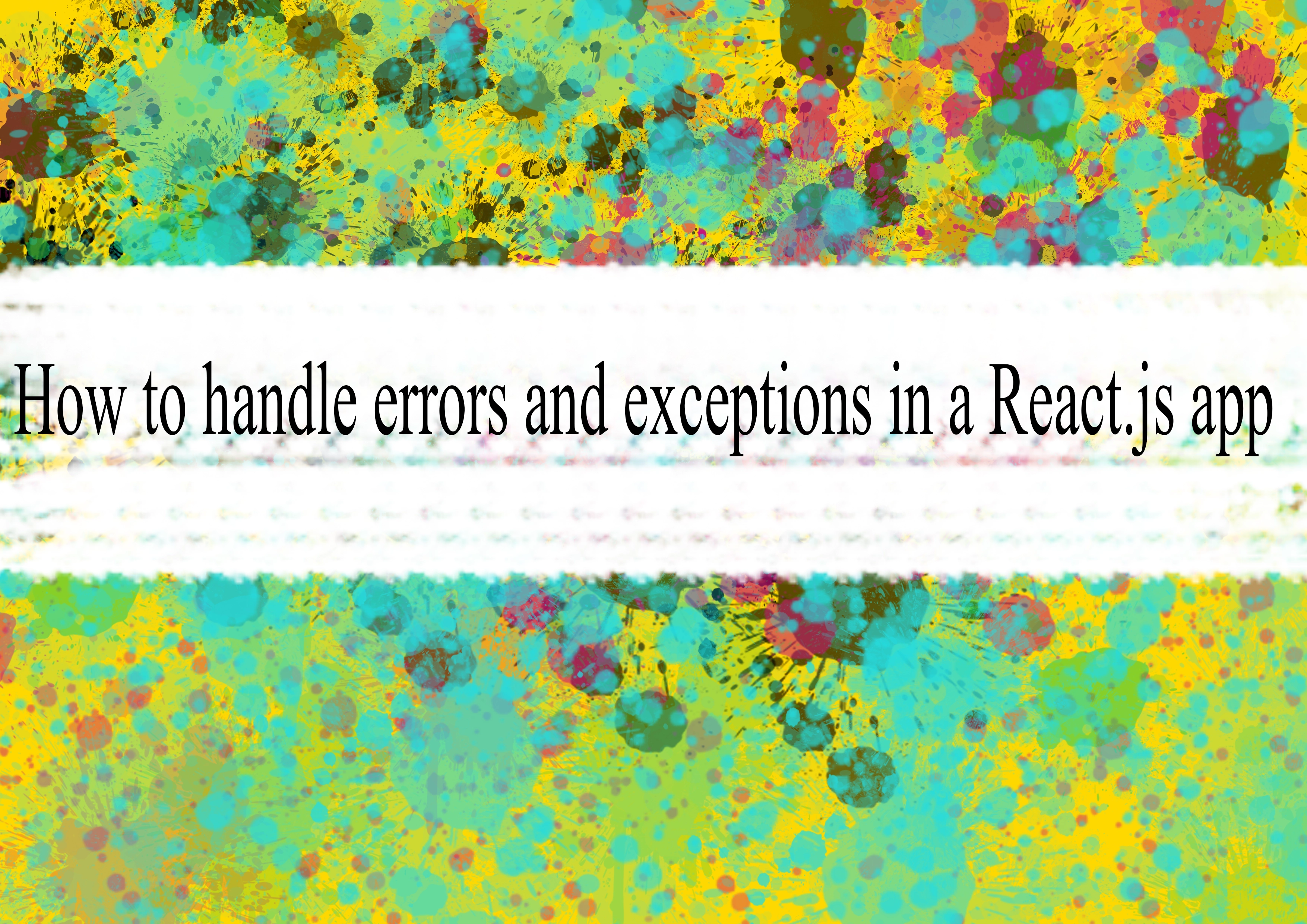How to handle errors and exceptions in a React.js app

Handling errors and exceptions in a React.js app is crucial for providing a good user experience and maintaining the stability of your application. Here are some common approaches and techniques for handling errors in a React app:
1. Error Boundaries:
Error boundaries are special components in React that catch JavaScript errors anywhere in their child component tree and log those errors, display a fallback UI, or perform other actions. To create an error boundary, you can define a component with the componentDidCatch lifecycle method.
jsxclass ErrorBoundary extends React.Component {
constructor(props) {
super(props);
this.state = { hasError: false };
}
componentDidCatch(error, errorInfo) {
this.setState({ hasError: true });
// Log the error to an error reporting service
logErrorToService(error, errorInfo);
}
render() {
if (this.state.hasError) {
return <h1>Something went wrong.</h1>;
}
return this.props.children;
}
}
You can use this error boundary in your components by wrapping them:
jsx<ErrorBoundary>
<MyComponent />
</ErrorBoundary>
2. Try-Catch Blocks:
You can use regular JavaScript try-catch blocks to handle errors in specific parts of your code. This is particularly useful when dealing with asynchronous operations like API calls.
jsxclass MyComponent extends React.Component {
fetchData = async () => {
try {
const response = await fetch('https://api.example.com/data');
const data = await response.json();
// Process data
} catch (error) {
console.error('Error fetching data:', error);
// Handle the error (e.g., show an error message to the user)
}
};
render() {
// Render component content
}
}
3. Error Boundary with Higher-Order Component (HOC):
You can create a higher-order component that acts as an error boundary and wrap your components with it.
jsxfunction withErrorBoundary(WrappedComponent) {
return class ErrorBoundary extends React.Component {
constructor(props) {
super(props);
this.state = { hasError: false };
}
componentDidCatch(error, errorInfo) {
this.setState({ hasError: true });
logErrorToService(error, errorInfo);
}
render() {
if (this.state.hasError) {
return <h1>Something went wrong.</h1>;
}
return <WrappedComponent {...this.props} />;
}
};
}
const MyComponentWithBoundary = withErrorBoundary(MyComponent);
4. Global Error Handling:
You can set up a global error handler to catch unhandled errors throughout your application. This can be done using the window.onerror event or by using global error event listeners.
jsxcomponentDidMount() {
window.addEventListener('error', this.handleGlobalError);
}
componentWillUnmount() {
window.removeEventListener('error', this.handleGlobalError);
}
handleGlobalError = (error) => {
console.error('Global error:', error);
// Log the error to an error reporting service
logErrorToService(error);
};
Remember to use these techniques judiciously and provide meaningful error messages or fallback UI to users when errors occur. Additionally, logging errors to a service (e.g., Sentry, LogRocket) can help you track and debug issues in production.
-
Popular Post
- How to optimize for Google's About This Result feature for local businesses
- How to implement multi-language support in an Express.js application
- How to handle and optimize for changes in mobile search behavior
- How to handle CORS in a Node.js application
- How to use Vue.js with a UI framework (e.g., Vuetify, Element UI)
- How to configure Laravel Telescope for monitoring and profiling API requests
- How to create a command-line tool using the Commander.js library in Node.js
- How to implement code splitting in a React.js application
- How to use the AWS SDK for Node.js to interact with various AWS services
- How to use the Node.js Stream API for efficient data processing
- How to implement a cookie parser middleware in Node.js
- How to implement WebSockets for real-time communication in React
-
Latest Post
- How to implement a dynamic form with dynamic field styling based on user input in Next.js
- How to create a custom hook for handling user interactions with the browser's device motion in Next.js
- How to create a custom hook for handling user interactions with the browser's battery status in Next.js
- How to implement a dynamic form with dynamic field visibility based on user input in Next.js
- How to implement a dynamic form with real-time collaboration features in Next.js
- How to create a custom hook for handling user interactions with the browser's media devices in Next.js
- How to use the useSWRInfinite hook for paginating data with a custom loading indicator in Next.js
- How to create a custom hook for handling user interactions with the browser's network status in Next.js
- How to create a custom hook for handling user interactions with the browser's location in Next.js
- How to implement a dynamic form with multi-language support in Next.js
- How to create a custom hook for handling user interactions with the browser's ambient light sensor in Next.js
- How to use the useHover hook for creating interactive image zoom effects in Next.js